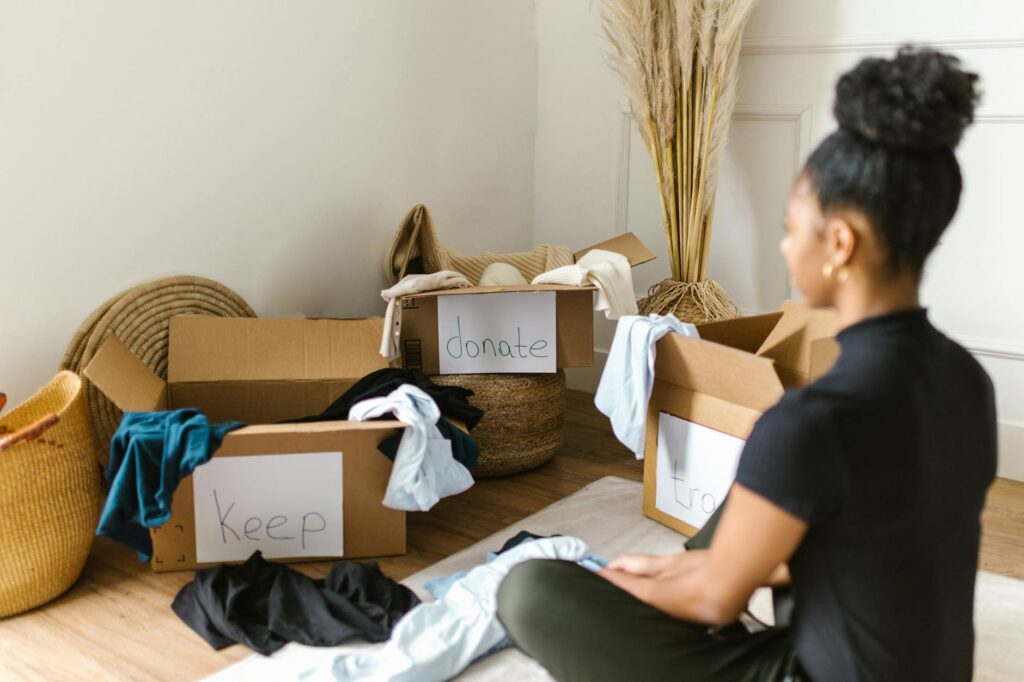
Introduction
Keeping a home tidy starts with a clear, efficient plan. This article walks you through a room-by-room decluttering and cleaning checklist that makes the process manageable and repeatable. You’ll learn how to prepare with the right tools, how to sort and prioritize items in each space, and which cleaning tasks to tackle now versus later. The approach balances quick daily habits with deeper weekly and monthly work so you save time while maintaining order. Read on for practical checklists for common rooms, a realistic maintenance schedule, and simple habits that prevent clutter from piling up again. Use this guide to build a routine that fits your lifestyle and helps every room stay functional and inviting.
Prepare and plan
Before you jump into any room, set yourself up for success. Preparation reduces decision fatigue and speeds the whole process.
- Create zones for sorting: Keep, donate, recycle, trash. Label bags or boxes so decisions are final and fast.
- Assemble your kit: Trash bags, microfiber cloths, all-purpose cleaner, glass cleaner, broom, vacuum, mop, duster, storage bins, sticky labels, and a timer.
- Set realistic goals: Use a timer (25 to 45 minutes) per room for a focused session, or block a half day for deep-cleaning multiple rooms.
- Work top to bottom: Dust and declutter before vacuuming and mopping so floors aren’t re-soiled.
- Make quick rules: One-touch policy for mail, five-minute nightly tidy, and a donate box that leaves the house weekly.
Preparation connects to every next step: the tools you gather and the habits you set will make room-by-room work faster and less stressful.
Room-by-room cleaning checklist
Focus on decluttering first, then cleaning. Below are practical checklists for the most used spaces. Use the same sorting categories and tools from the preparation stage to keep the flow efficient.
Living room
- Remove items that don’t belong and return them to their rooms.
- Sort magazines, mail, and loose papers; file, recycle, or shred as needed.
- Declutter surfaces: coffee table, side tables, TV stand. Store remotes and controllers in a basket.
- Dust electronics and shelves, vacuum upholstered furniture and under cushions, spot-clean stains.
- Vacuum or sweep floors and mop if hard flooring.
Kitchen
- Clear counters: put away appliances you don’t use daily.
- Empty and declutter the refrigerator and pantry; toss expired items and group like items together.
- Wash dishes, clean sink, and wipe cabinets and backsplash.
- Degrease stovetop, spot-clean oven exterior, and empty trash.
- Mop floors and clean under movable appliances if time allows.
Bedroom
- Make the bed to immediately improve the room’s appearance.
- Declutter surfaces: nightstands, dresser tops. Use drawer organizers for small items.
- Sort wardrobe: keep, mend, donate. Rotate seasonal clothing and store off-season items.
- Dust, vacuum under bed, and wash bedding regularly.
- Address small repairs or closet reorganizing on a separate session.
Bathroom
- Throw out expired skincare and medications safely.
- Declutter counters and store daily items in a tray or caddy.
- Scrub sink, toilet, shower/tub, and tiles. Wipe mirrors and faucets.
- Replace towels and empty trash. Use a squeegee after showers to reduce buildup.
- Keep a weekly cleaning routine to avoid heavy buildup.
Entry and home office
- Clear shoes and coats; use hooks or a shoe rack to keep entry tidy.
- Sort mail immediately; file important papers and recycle junk mail.
- Organize desk: clear excess papers, limit supplies on the desktop, use cable management.
- Wipe surfaces, dust electronics, and vacuum floors.
Deep-clean tasks and maintenance schedule
After the initial declutter and cleaning pass, set a maintenance rhythm. The table below gives realistic time estimates and suggested frequencies so you can plan weekly, monthly, and seasonal tasks without overwhelm.
| Room | Priority tasks | Suggested frequency | Time estimate |
|---|---|---|---|
| Living room | Declutter surfaces, vacuum furniture, dust electronics | Weekly | 30–45 minutes |
| Kitchen | Clean fridge/pantry, deep-clean oven, degrease surfaces | Biweekly to monthly | 45–90 minutes |
| Bedroom | Launder bedding, declutter closet, vacuum under bed | Weekly for bedding, seasonal for wardrobe | 20–60 minutes |
| Bathroom | Scrub grout, descale showerheads, replace toiletries | Weekly cleaning; deep clean monthly | 20–40 minutes weekly; 60+ minutes monthly |
| Entry/home office | Sort mail, tidy desk, dust electronics | Daily for mail; weekly for desk | 5–15 minutes daily; 20–30 minutes weekly |
For deep-clean sessions, add one focused project each month: clean windows, shampoo rugs, or reorganize a storage area. These tasks connect back to initial decluttering and help prevent reaccumulation.
Build habits and finishing touches
Small daily rituals keep your home tidy without marathon cleaning sessions. Habits rely on simplicity and consistency.
- Five-minute nightly tidy: Return items to their places, wipe high-use surfaces, take out small trash.
- Use containers: Baskets and labeled bins make it easy to put things away quickly.
- One in, one out: For every new item brought in, consider removing one old item to avoid buildup.
- Delegate and schedule: If you share the space, assign rooms or tasks so everyone contributes. Put recurring tasks on a calendar or app reminder.
- Reward progress: Celebrate completed sessions to reinforce the habit loop and make cleaning feel less like a chore.
These finishing touches tie back to planning and the checklists: the easier you make returning items and maintaining surfaces, the less often you need deep-clean interventions.
Conclusion
Decluttering and cleaning room by room is most effective when you prepare, follow a focused checklist, and maintain a realistic schedule. Start by assembling the right tools and sorting system, then tackle rooms in a consistent order—declutter first, clean second, and address deeper tasks on a monthly timeline. Use the suggested frequencies and time estimates to plan sessions that fit your routine, and adopt daily habits like a five-minute tidy and one in, one out to prevent clutter from returning. By combining preparation, targeted room checklists, and simple maintenance habits, you’ll keep every space functional, welcoming, and easier to upkeep long term.
Image by: RDNE Stock project
https://www.pexels.com/@rdne




